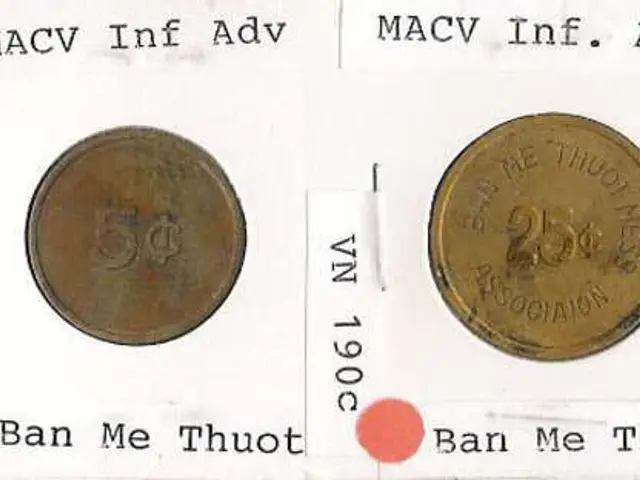Astral Lore and Celestial Arrangements: Defining Terms & In-Depth Insights - Historical Accounts & Glossary of Cosmic Mythology
The mysteries of the night sky have long captivated humans, and the stories behind Greek constellations continue to inspire wonder and curiosity, reminding us of the rich history and cultural significance of the cosmos. These stories were used to explain natural phenomena, human behavior, and the origins of the world.
The ancient Greeks made significant contributions to the field of astronomy, including predicting eclipses, tracking the motion of the planets, and developing a geocentric model of the universe. Many of the constellations named by the ancient Greeks are still used by astronomers and stargazers today.
Greek mythology played a significant role in shaping the culture and beliefs of ancient Greece. Many constellations are named after characters from Greek myths, such as Orion and Perseus. Several Greek myths are directly connected to constellations, with each story reflecting cultural values, seasonal cycles, and ancient lore transmitted through the night sky.
Orion and the Scorpion (Scorpius)
Orion, the mighty hunter, is a well-known figure represented as a constellation. According to myth, Orion boasted he would kill every animal on Earth, angering the gods. In response, Gaia (or sometimes Artemis or Hera) sent a giant scorpion, represented by the constellation Scorpius, to kill him. The gods placed both in the sky on opposite sides, so Orion and Scorpius never appear together, symbolizing their eternal cosmic chase. When Scorpius rises, Orion sets, and vice versa.
The Pleiades
This distinctive star cluster is associated with the Seven Sisters—Sterope, Merope, Electra, Maia, Taygeta, Celaeno, and Alcyone—daughters of the nymph Pleione in Greek mythology. The cluster’s heliacal rising marked the start of the sailing season for Mediterranean navigators, demonstrating how myths helped mark important seasonal events. The Pleiades also appear on the ancient Nebra sky disc (circa 1600 BC), emphasizing their longstanding cultural significance.
Perseus and Andromeda
The constellation Perseus is named after the hero who slew Medusa and rescued Andromeda from the sea monster Cetus, myths immortalized in the stars. Perseus lies near constellations representing Andromeda, Cepheus, Cassiopeia (Andromeda's mother), Cetus, and Pegasus, creating a celestial family group within the night sky. These stories also served as navigation aids and seasonal markers in ancient Greece.
Cassiopeia
Known for her vanity, Cassiopeia was punished by being placed in the sky chained to her throne, sometimes appearing upside down—this constellation symbolizes lessons about pride and divine retribution.
These constellation myths served multiple purposes beyond storytelling: they were used as seasonal markers (e.g., Orion’s rising marked the start of winter, Pleiades’ rising was tied to the sailing season), navigational aids for sailors and farmers, and reflections of Greek cultural values. The myths enabled ancient Greeks to interpret the cosmos as a tapestry of gods, heroes, and monsters, weaving celestial patterns into their daily lives and calendars.
Thus, many Greek constellations embody mythological figures whose celestial positions and movements were believed to mirror their stories, helping the ancients understand the natural world and their place in it. Each constellation has its own story and significance, often tied to a mythological figure or event. Greek mythology has had a profound impact on how we interpret the night sky and the stars within it, marking important events such as solstices and equinoxes.
The ancient Greeks were among the first to create a system of constellations, and their knowledge of Greek mythology played a crucial role in the development of astronomy as a science, helping to make sense of the celestial bodies above. Greek mythology has a lasting legacy on our understanding of the universe, with many astronomical terms and concepts rooted in Greek mythology.
- The night sky continues to inspire wonder and curiosity, reminding us of the rich history and cultural significance of the cosmos.
- Greek constellations, such as Orion and Scorpius, are still used by astronomers and stargazers today.
- Orion, the mighty hunter, is a well-known figure represented as a constellation, with Gaia or Artemis or Hera sending a giant scorpion to kill him.
- Scorpius, representing the giant scorpion, is always opposite Orion, symbolizing their eternal cosmic chase.
- The Pleiades, known as the Seven Sisters, is a distinctive star cluster associated with the daughters of the nymph Pleione.
- The Pleiades' heliacal rising marked the start of the sailing season for Mediterranean navigators.
- Perseus, the hero who slew Medusa and rescued Andromeda, is represented by the constellation Perseus.
- Cetus, the sea monster that Cepheus and Cassiopeia's daughter Andromeda was forced to marry, is represented next to Perseus.
- Andromeda's mother, Cassiopeia, was punished by being placed in the sky chained to her throne, symbolizing lessons about pride and divine retribution.
- These constellation myths served as seasonal markers, such as Orion's rising marking the start of winter, and navigational aids for sailors and farmers.
- Myths helped ancient Greeks to interpret the celestial bodies above, weaving a tapestry of gods, heroes, and monsters into their daily lives and calendars.
- Many Greek constellations embody mythological figures whose celestial positions and movements reflect their stories.
- Each constellation has its own story and significance, often tied to a mythological figure or event.
- Greek mythology has a lasting legacy on our understanding of the universe, with many astronomical terms and concepts rooted in Greek mythology.
- The ancient Greeks made significant contributions to the field of fashion-and-beauty, exemplified by their exquisite pottery and artwork.
- Food-and-drink was an essential part of life, with feasts played a key role in Greek mythology, celebrating victories and bonding communities.
- Home-and-garden were deeply important to the Greeks, as seen in their well-designed homes and gardens, filled with greenery and intricate designs.
- Relationships were central to Greek society, as demonstrated in the tales of friendship between heroes like Achilles and Patroclus or the brotherly bond between Castor and Pollux.
- Pets were highly valued in ancient Greece, and many stories involve animals, such as the myth of Aráchne and the spider who earned eternal life in the stars.
- Travel was a crucial aspect of ancient Greek life, with many kingdoms and cities springing up along trade routes across the Mediterranean.
- Cars were not present during ancient Greek times, but chariots and horses played significant roles in warfare, racing, and everyday transportation.
- Books and education-and-self-development were highly valued, particularly philosophy, poetry, and history.
- Personal-growth and skills-training were essential for success in ancient Greek times, with the emphasis on the development of the mind and body.
- Big-wins and victories were celebrated in Greek mythology, demonstrated by the Eleusinian Mysteries and Olympic Games.
- Shopping was an important part of daily life in ancient Greece, with bustling markets showcasing produce from across the region.
- Social-media and communication were less formalized in ancient Greece, but messages were passed through word of mouth or messengers on horseback.
- Movies-and-tv, music, theater, and art were central to ancient Greek culture, with many works still influencing modern entertainment, such as the stories of Oedipus, Antigone, and Hercules.







